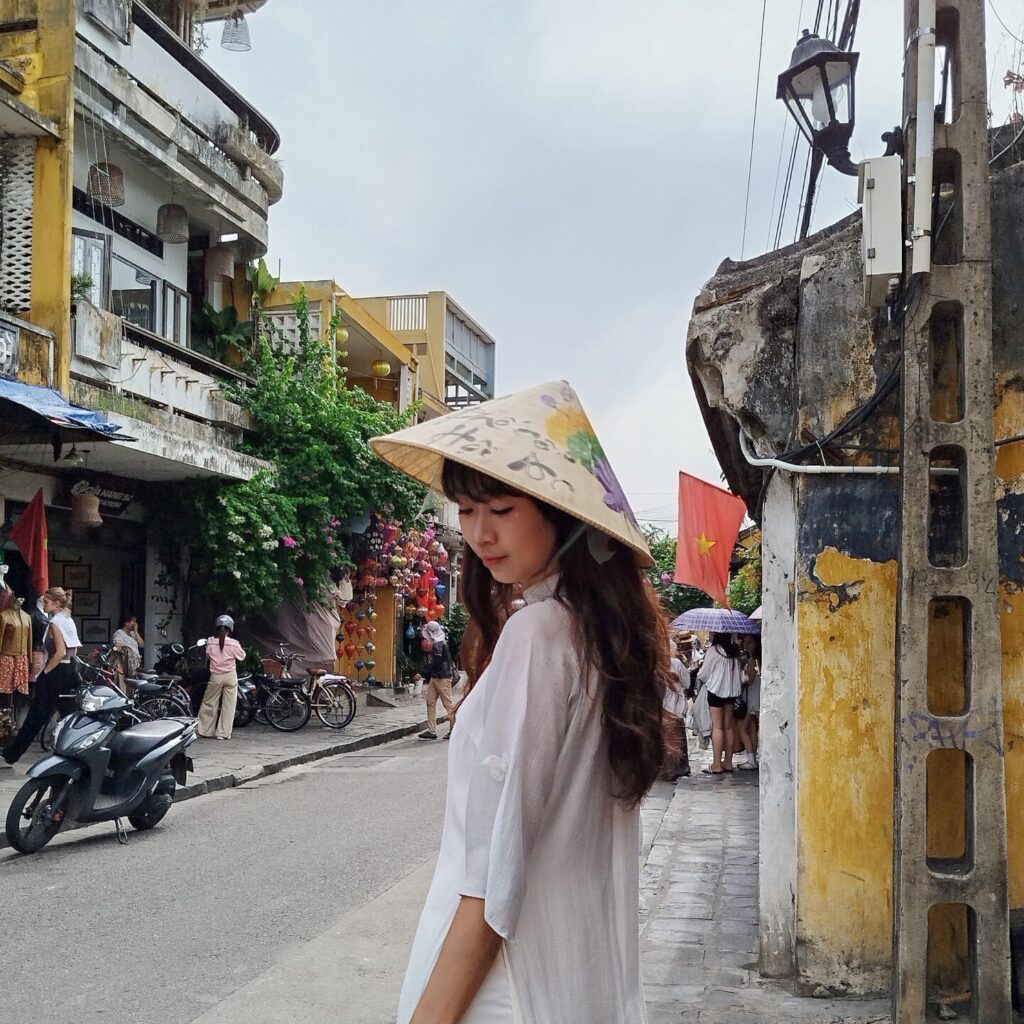After my working holidays in New Zealand and Australia, it was time for me to move on to part 3 of my The Only Way is Up journey: Southeast Asia. The route I envisioned was from Indonesia to Singapore, Malaysia, Thailand, Cambodia and Vietnam. After returning to Singapore from Indonesia by flight, I would travel overland by buses or trains.
You might expect that for someone who is from Southeast Asia, this would be easy. After all, so many travellers from even faraway continents like Europe do this!
But no, it was not. I felt fearful.
For one, it was a step up in difficulty compared to what I had done previously because it now involved traversing across multiple countries. And well, there was also another reason. I have to admit that I had been living pretty much in a bubble.
The Bubble
As a Singaporean, I grew up hearing that my country is exceptional in many aspects – safety, wealth, infrastructure, etc. Unfortunately, the contrary is often implied for our neighbouring countries. I even heard before that I would be better off not visiting certain countries. Many cautioned me about safety, which eventually led to the decision for my boyfriend Chiharu to come along until the beginning of Vietnam.
It is a huge shame considering that I am from Southeast Asia but knew so little about the region beyond these impressions. That was when I knew that I had to burst the bubble I was living in.
Mark Twain once said, “Travel is fatal to prejudice, bigotry, and narrow-mindedness, and many of our people need it sorely on these accounts.”
What other better way to do so than to go on a journey myself? That was what started a few months of backpacking adventure across Southeast Asia, which I will share my impressions about here.
#1 Chaos At First Glance
The first impressions are surely formed at the surface level.
When we landed in Yogyakarta in Indonesia, I was feeling both nervous and excited. We experienced our first culture shock from how different the environment that greeted us was.
Upon walking out of train station which the airport train took us to, we were approached by many taxi drivers asking us where we were going. We avoided them instinctively out of fear, rationalising that we could walk to the hostel by ourselves. That was a mistake. Unlike what we were used to, there were no proper pedestrian paths and the traffic lights didn’t work (so we just had to make a run for it!). By the time we got to the hostel, an hour had passed and we were visibly exhausted.
The theme of chaos was apparent throughout our backpacking in Southeast Asia. Walking down a street is guaranteed to never be a dull experience. Street peddlers would hawk their wares and enthusiastically try to get your attention. Street food stalls (which would not pass food hygiene standards in my country, and for that reason became a thing of the past) pop up every here and there. Vehicles, from scooters to tuk-tuks, would zip around haphazardly.
I started to realise that structure and orderliness which I have been used to back home are an anomaly in the region.
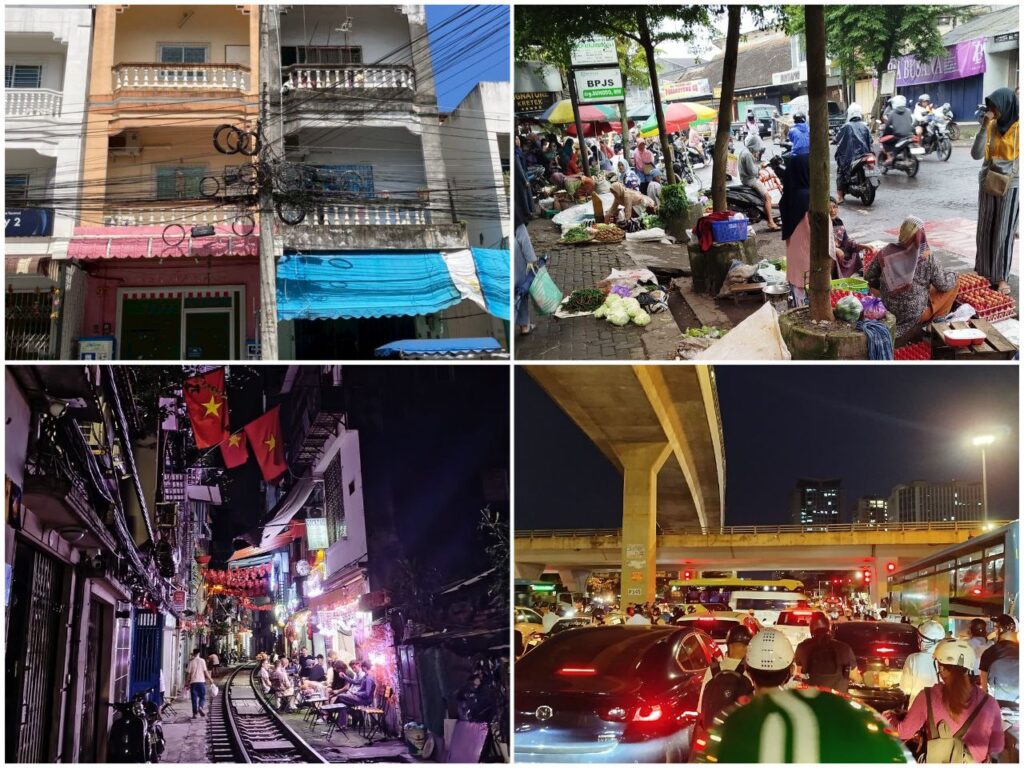
As time went by and we slowly adapted to that, it was not such a big deal anymore. However, chaos can certainly be disconcerting at first glance. It may even bring about feelings of unsafety. Flashback to that moment we were trying to buckle our broken seatbelts in a Grab ride in Indonesia, then realised that our driver didn’t even have his seatbelt on.
You can imagine how these feelings might be heightened for someone who lives in a place governed by strict laws and regulations, where everything from the streets to nature are impeccably well-organised. A breakdown in that would be viewed as a hazard or failure to be fixed immediately. But what surprised me there was that things still work somehow in spite of the chaos.
Take for example, navigating the insane traffic in Vietnam. Red lights mean green lights. Crossing the road felt like a gamble with my life. You do this: Put out your arms, start walking and pray they don’t knock you over. What intrigued me was how the drivers always managed to avoid pedestrians. (I am pretty sure that accidents do happen but it is lesser than what one would expect) It seemed like they have developed an instinct for maneuvering around pedestrians. That takes a high level of alertness and skill!
It seemed that people not only managed to cope with chaos, but also thrive in it. The Hanoi Train Street, a popular tourist attraction, comes to my mind. Train tracks literally cut across this narrow street, with only a 1m distance away from the walls! Actual trains would whiz past wide-eyed patrons on both sides, treating them to an adrenaline rush. The coffee shop owners made a thriving business out of this, organising their activities around the daily timings of the trains.
As I lived with chaos, I also slowly discovered a charm to it. When things are well-structured, it is highly predictable. Perhaps this is about personal preference as well, but I suppose it could get a bit boring if you knew exactly all the things that are going to happen. That would be the opposite of an adventure. Chaos offers opportunities for unexpected encounters.
One of the spontaneous things that happened to me in Da Nang was a Grab motorbike driver stopping on the roadside to offer me a ride when he saw me walking under the heat with my heavy backpack. He later toured me around which I had such a fun time with, even though we were communicating using a translator!
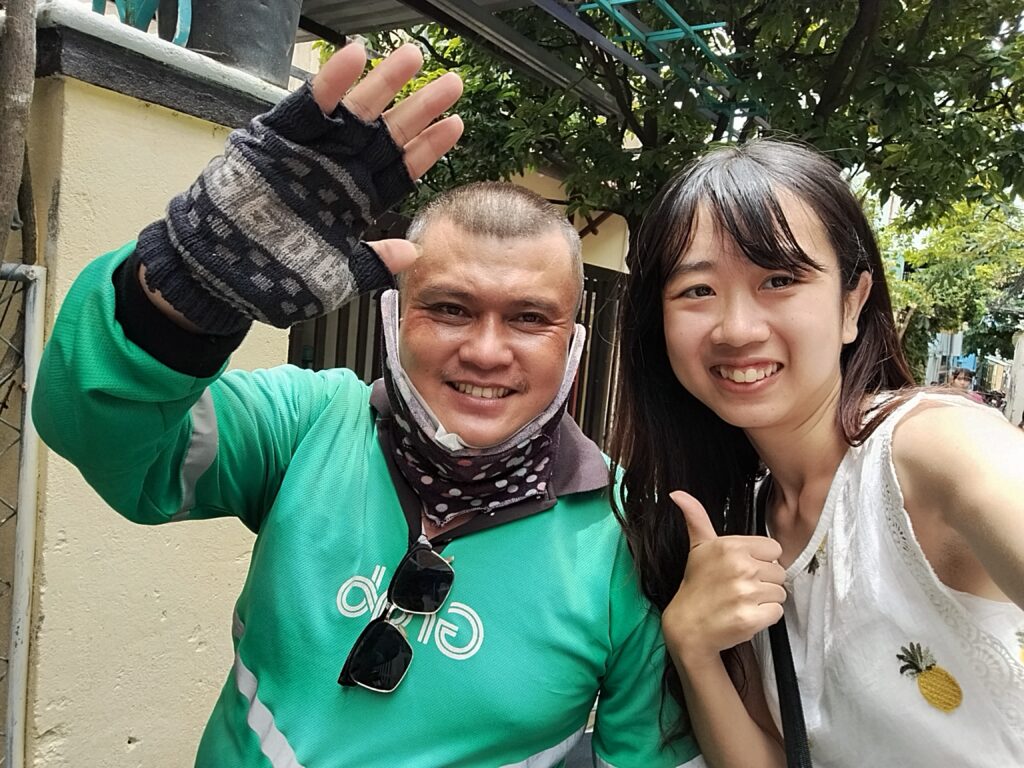
Months of scooting around places on Grab motorbikes is absolutely one of the things I enjoy the most in Southeast Asia. It felt exhilarating, be it weaving through a web of vehicles during peak hour traffic in the city or through the tropical landscape in the countryside. I love that feeling of aliveness from being made hyper aware of every moment, sight and sound as I held on tightly to my seat.
#2 Going Way Back in History
Travelling Southeast Asia was like time-travelling. It stretched my imagination, taking me back to a time far beyond what I had known.
It was truly an honour to be able to visit so many UNESCO World Heritage Sites. Some of those were religious monuments, namely Buddhist and Hindu temples. My favourites were the Borobudur Temple in Yogyakarta, Indonesia and Angkor Wat in Siem Reap, Cambodia.
The very first one I visited, Borobudur Temple, left me awestruck. It is the largest Buddhist temple in the world, modelled after the cosmology in Buddhism. I liked how one has to literally climb up the stairs to reach Nirvana, the state of enlightenment. Imagine my shock when I learned that it was constructed in the 9th century! Did people back then already have the tools to build something like this?
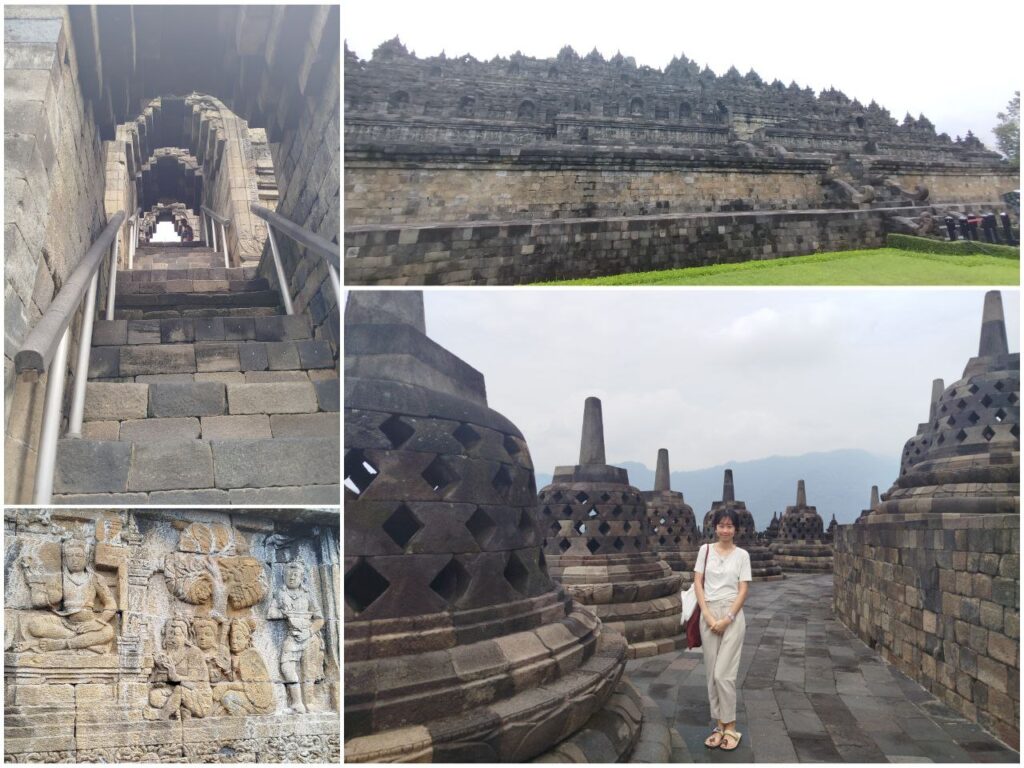
And then there is the Angkor Wat, which I think is a must-see in your life. It turned out to be not a single building but a complex of buildings that would require a tuk-tuk (their local taxi) to travel between. The magnificence of its architecture, for something built in the 12th century, really blew me away.
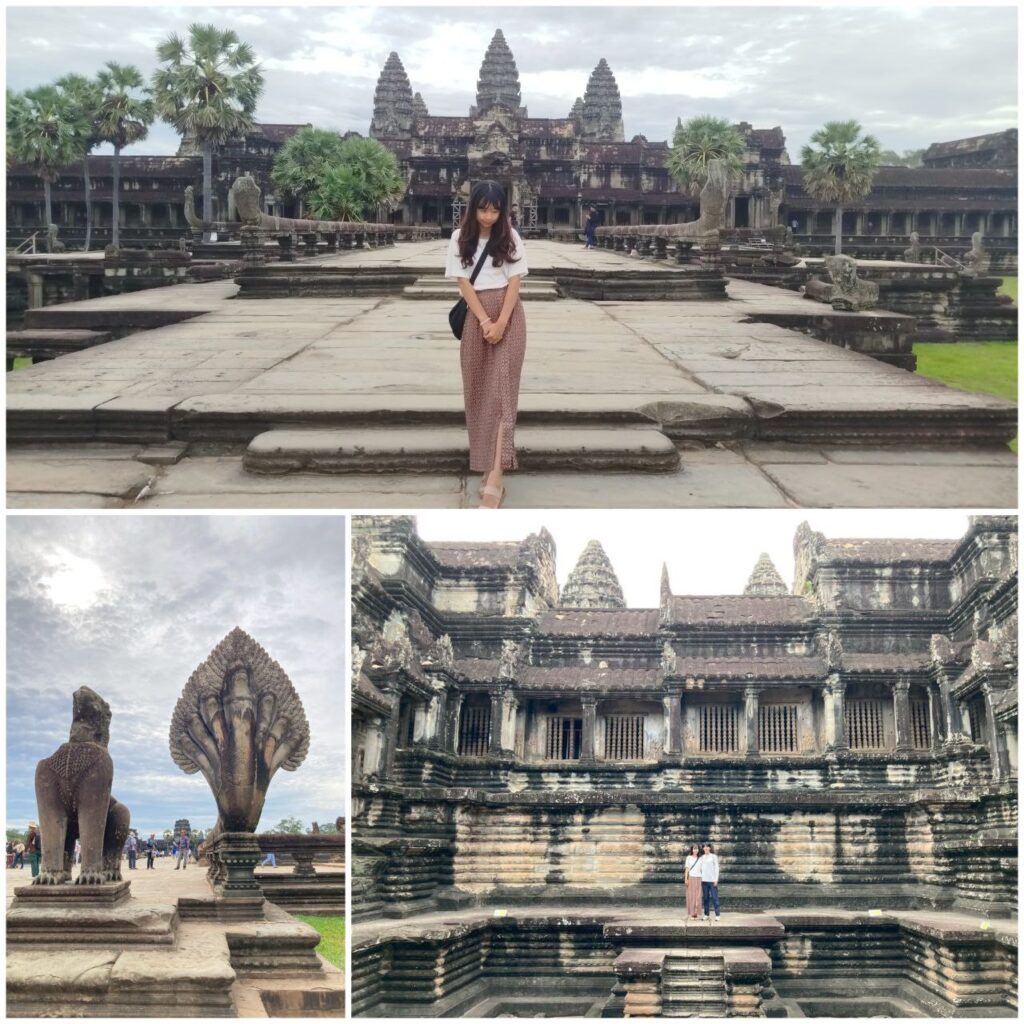
Some other World Heritage Sites were cities or towns, such as Georgetown, Penang in Malaysia (part of the Straits Settlement, a former British crown colony alongside Malacca and Singapore until 1946), Ayutthaya in Thailand (the ancient capital of the Siam kingdom from the 14th century to 18th century) and Hoi An in Vietnam (a trading port from the 15th to 19th century).
All these places were thriving trading ports where a myriad of cultures came to intersect. I was mistaken to think that international trade was only thriving in the Straits of Malacca when it was also happening in other places. Like earlier in Hoi An where there were prominently the Chinese, Japanese and Europeans. The presence of these foreign cultures can still be felt, with the local food and architecture there being influenced by it. Cao Lau, their must-try dish, was inspired by Japanese udon noodles and Chinese roasted pork. As you walk around the ancient town, find their iconic landmark – the Japanese Covered bridge which was rebuilt by the Chinese after the Japanese left. Beautiful lanterns of different shapes and sizes hang outside the shop fronts like curtains. (Fun fact: Vietnamese lanterns are garlic and diamond shaped whereas Chinese and Japanese lanterns are round and oval respectively)
I remember standing in the town, trying to visualise a scene where merchants from different cultures were going about their businesses on the streets. How were they dressed? What did they sell? How did they communicate?
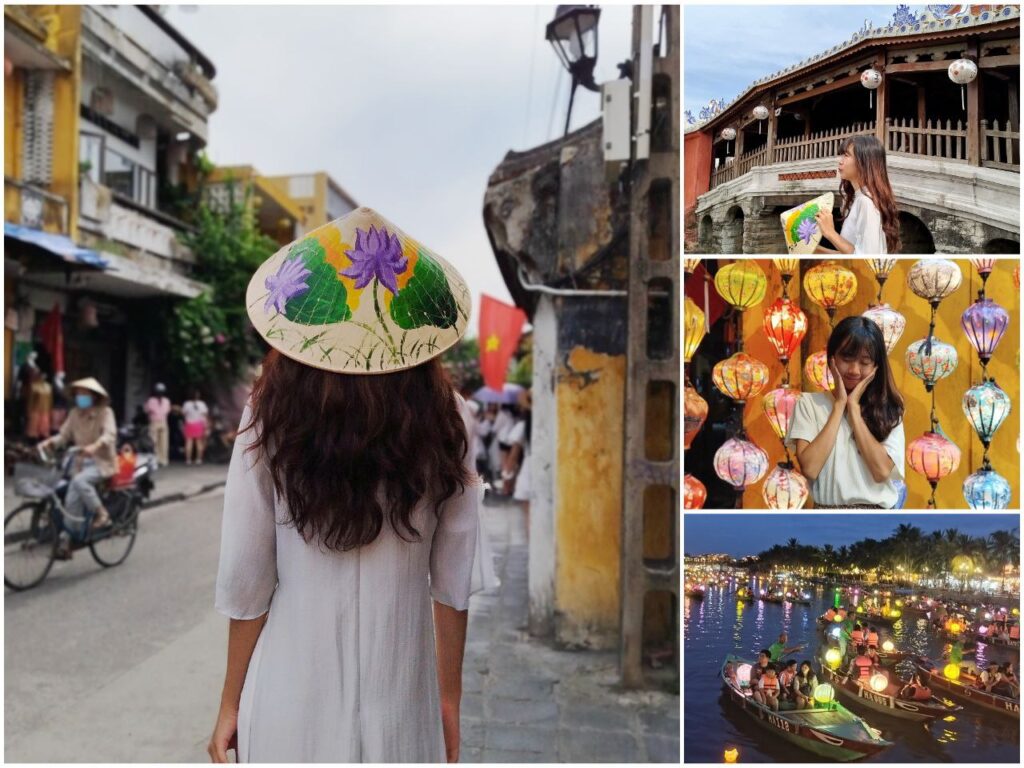
Here is the thing: I don’t consider myself a history enthusiast but backpacking throughout Southeast Asia really ignited a spark in me. The benefit of overland travelling was being able to see the gradual changes as I moved upwards. I was able to piece together the puzzle of what had roughly happened in the region.
I learned of the powerful empires that once ruled, from the Majapahit empire to the Khmer empire. How major religions like Buddhism, Hinduism and Islam spread throughout the region. (I was studying a book about Buddhism and its history as well) How the forces of colonisation shaped places, namely concerning the British (Singapore, Malaysia), Dutch (Indonesia) and French (Cambodia, Vietnam).
I was only beginning to see how Southeast Asia was basically a region of Western colonisation and how the subjugation of the people who lived there affected them. It was undoubtedly the biggest sign that I was living in a bubble. The history that most of us learned in school in Singapore hardly touched on the pre-colonial era before 1819. My imagination for history was thus capped there. The framing of colonial legacy back home is also quite different, showing a more favourable view of it.
Being able to rewind time back to a few hundred years ago helped me to see the things that I missed out. I suddenly felt so small in the whole scheme of things which was nothing short of a humbling experience.
Besides, it helped me to connect something from my personal past. I knew that my maternal grandfather was a sailor from Hainan, China but I was not able to ask him about his story before he passed away. Now that I know the context of how the Chinese diaspora formed in Southeast Asia, it gives me a greater sense of groundedness here. I will likely make an effort in the future to properly trace my ancestry.
#3 What Inequality Looks Like
It is said to be one of Singaporeans’ favourite national past times to travel to parts of Southeast Asia like Malaysia and Thailand for cheap food and shopping.
It should come as no surprise that things would be cheaper anywhere else in Southeast Asia other than Singapore, which ranks consistently as one of the most expensive cities in the world. Nonetheless, I was especially shocked at how cheap things were particularly in Indonesia and Vietnam. For reference, the price of 10 satays in Indonesia is equivalent to the price of 1 satay in Singapore. A 1-night stay in a backpacker’s hostel in Vietnam costs as little as SGD5. A Grab ride within town usually costs no more than a few dollars, especially if you take the motorbike.
While it might seem like something to celebrate for Singaporeans, the converse is probably true for the locals there. Although lower wages might be adjusted for with lower costs of living, it still doesn’t seem dignified for one to be receiving such amounts for their labour. Moreover, they cannot enjoy the purchasing power that we have abroad with the strength of their currency. I didn’t know what I could do except to tip them whenever I could.
Along the way, I felt increasingly disturbed to realise the extent of privilege that I have. When I talked to young Indonesians (students of my host John who is an English teacher) during my homestay in Central Java, many of them revealed their eagerness to work abroad in countries including Singapore and Japan. The salary they can earn at home is only a few hundred dollars. For them, learning English (another popular language would be Japanese) and finding a job abroad is a golden opportunity to triple or quadruple their salary. Chiharu and I felt very complicated about what they shared. We knew well how these jobs are perceived by people back at home. How is it that the same opportunity can be interpreted in such different ways? How is that people can be motivated to travel for such different reasons? While some of us cross borders for self-discovery, some others cross borders for earning a living.
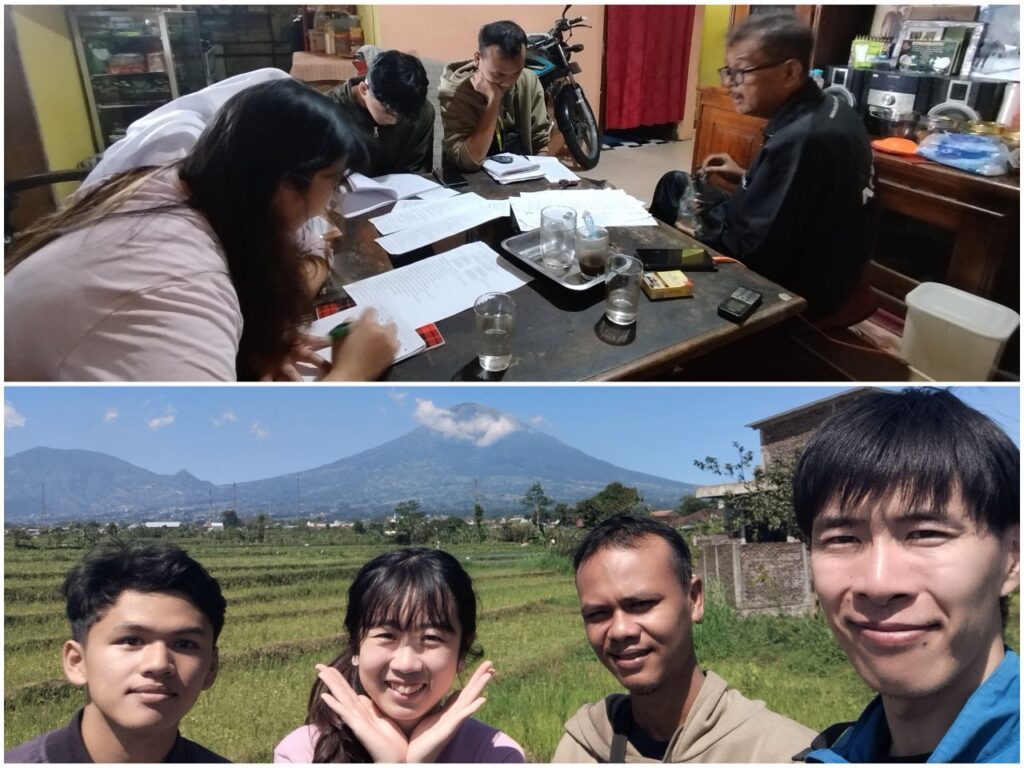
And if that didn’t hit me hard enough, I got another privilege check in Cambodia. When we were volunteering for a NGO school in Cambodia, we saw how the children there really value education due to a lack of opportunities. It was enough to put me to shame about my own attitude to education when I was younger. They were a lively and joyous bunch in the classroom. When their teacher was absent in the classroom once, they called out to us “Teach me, teach me!”. In fact, we were told that the top performing students would get rewarded with rice sacks. Yes, rice! It was inspiring in a way that it reminded me of the true meaning of education. It is basically meant to improve people’s lives, not to be a competition for the ego.
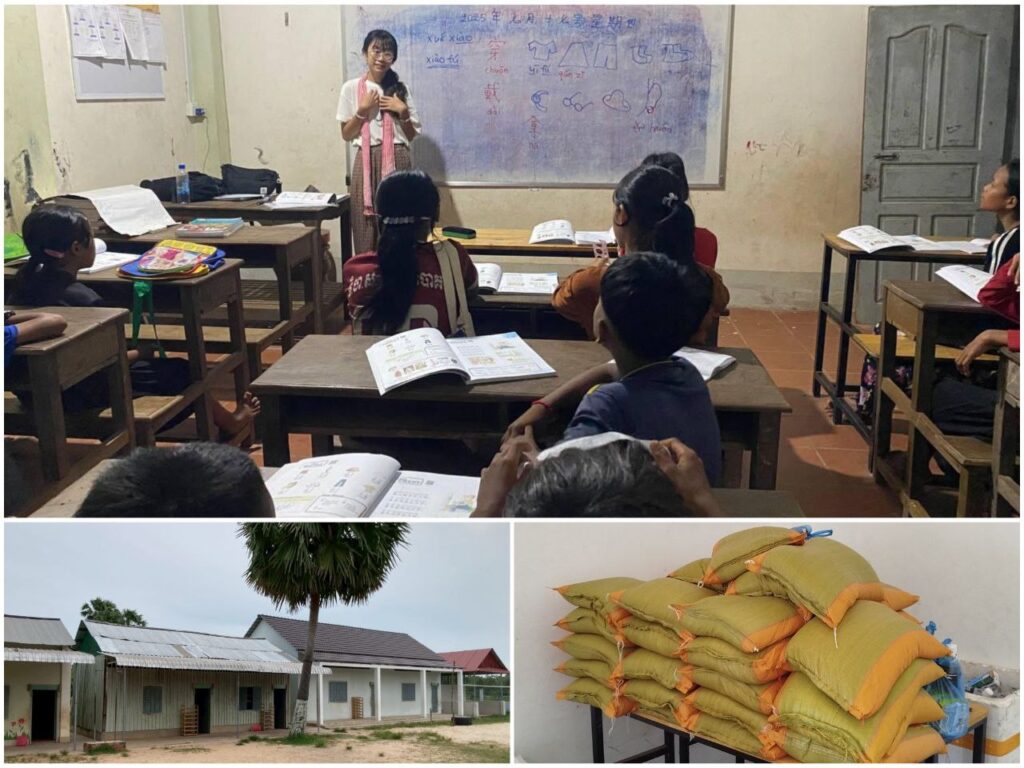
With all the young people I came across, I didn’t see myself as any different from them except for where we happened to be born in. It really pained me to see such inequality (and we are not even talking about inequality between the global north and south but neighbours living in close proximity to one another). It doesn’t feel right at all.
#4 Wealth in Other Forms
As I caught myself feeling sorry for them, I wondered where my feelings stemmed from. Was it a superiority complex? Did I believe even on a subconscious level that I have it better than them?
Perhaps so… but only on a material level.
I say this without trying to be insensitive or romanticise poverty, but the people in other Southeast Asian countries seemed happier. Their spirit felt lighter in a way that I cannot adequately describe. I heard more than a few declarations about how proud they are to be from where they are from, something that I wish I could say with confidence as well.
The truth is that they have wealth too, albeit in other forms that we do not usually recognise. I sought to find out what those were and uncovered a few clues to its sources.
One form of wealth they have is contentment. My stay at a small family farm in Surat Thani, Thailand was an example of that. I learned from my host Ten, with an agriculture background, that he was following the principles of the self-sufficiency economy in creating his farm. It is a sustainable developmental approach that was influenced by Buddhist values such as moderation or “Middle Way”, and was recommended by the late Thai king (whom Thai people respect a lot). We could tell that this family is truly happy with their simple and grounded way of life. Chiharu claimed it was the happiest week he spent in Thailand, and we both agreed that our dream life in the future would look something like this.
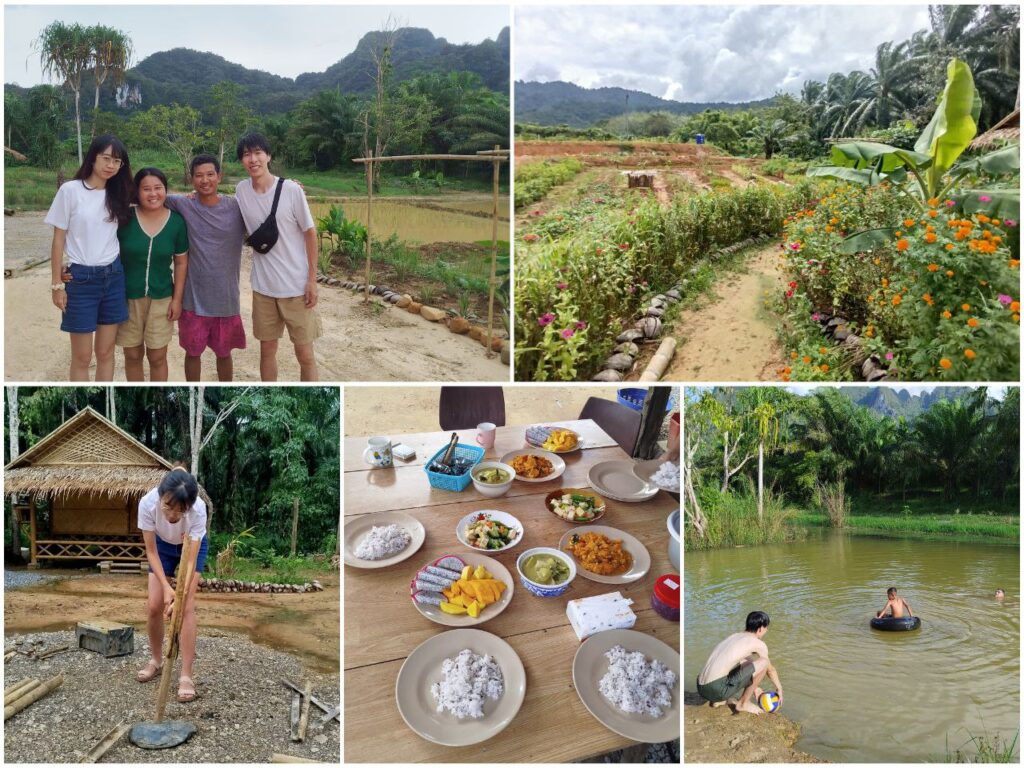
Another form of wealth is connection. Generational connection, neighbourly connection and all manners of connection.
Interestingly, my stay in Indonesia gave me a glimpse of what Singapore was probably like in the olden days when “kampongs” (Malay word for village) were still around. My host John often boasted about how strong social ties are in his culture, overriding other things like money. The spirit of “gotong royong” (Javanese word for working together) still thrives. He feels happy to see his students succeed and to have many friends. Although he earned very little from his work as a teacher, he is extremely generous and would not stop giving us food to “makan” (Malay/Indonesian word for eat). He has never been abroad in his life but has been hosting foreigners since the 1980s out of the love for it.
As a young Singaporean, I have always heard about the “kampong spirit” that used to exist but it was something that I never got to experience until now. It was truly alive at John’s place. I thought the entire village knew him as different people showed up at his door daily to visit for various reasons. It was inspiring to see how people consistently make effort to show up in one another’s lives.
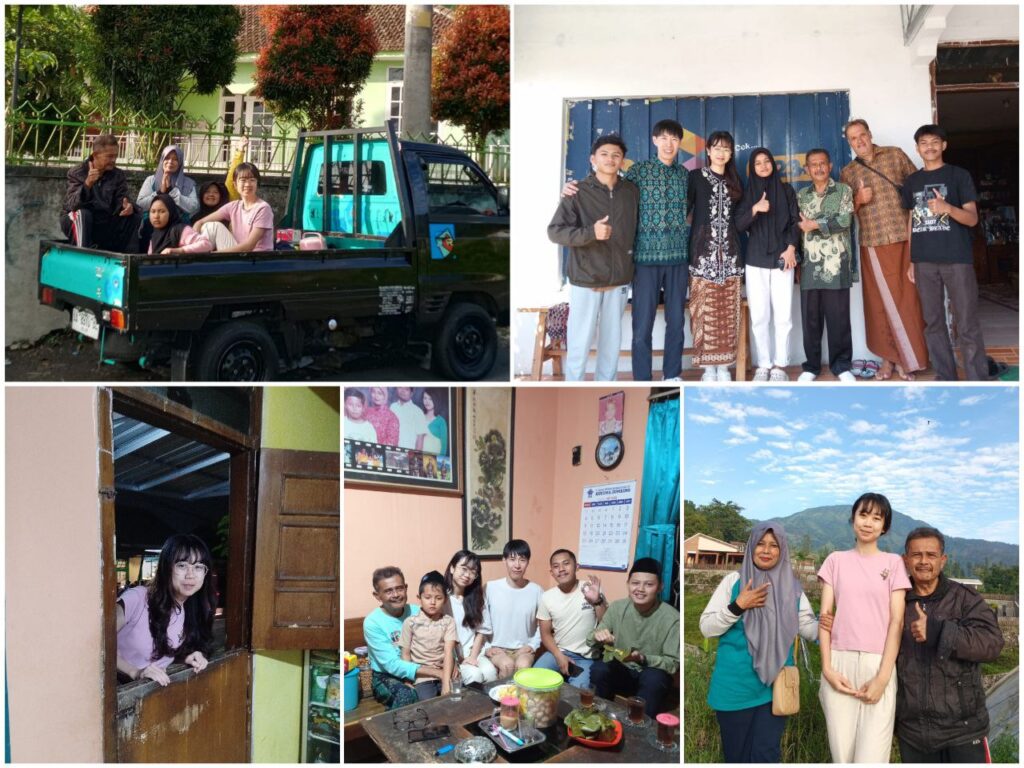
The observations beget the following questions: What do we consider “developed”? In the eager pursuit of material progress, have we lost sight of other forms of wealth that make for a happy and meaningful life?
Conclusion
If I have to use 1 word to describe my journey in Southeast Asia, it would be life-changing.
It felt rather trippy when I concluded this experience which spanned a few months with a short 3.5 hour flight from Hanoi to Singapore. But from the moment I stepped off the plane, I knew in my heart that I was no longer the same girl as before.
The bubble that I was living in had been burst.

